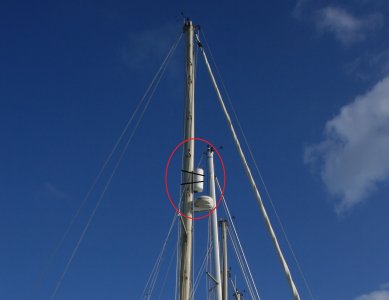Sandy
Well-known member
Sailing mostly single handed and from time to time I get the main halyard snagged up with the passive radar reflector; a complete pain in the derriere.
Having given the problem some though I'm considering running a couple of lines from the main shrouds, round the reflector:
Having given the problem some though I'm considering running a couple of lines from the main shrouds, round the reflector:
- has anybody else done this, if so what type of line have you use;
- have you used a constrictor knot as you pass the line round the reflector; and
- are the lines tight or slack?

